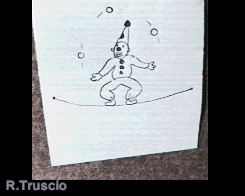Drawings that Move - Flip Books
Flip books are fun to make. They show how drawings can be made that seem to move. It is also a way to practice animation drawing.

An easy way to make a flip book is to use a pad of paper.
To
begin, select something you want to see move. For example, birds, bats, planes,
butterflies, and stick figures lend
themselves
to this type of drawing. Plan how you want the drawing to move.
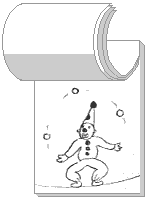
Think about how the motion will start, and how it will end. The action may need just a few pages or many pages.
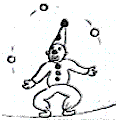
The First Drawing goes on the bottom
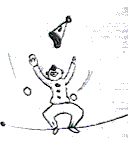
The last drawing will
be on top.
One way to plan is to draw the first and last pictures before you start. Each drawing will move the action from the bottom drawing to the top. If your final drawing does not match the top exactly, you may discard the top sheet.
| Make sure to use thin paper. Then you can see the drawing on the page below. The drawing below is your guide for making the drawing above. |
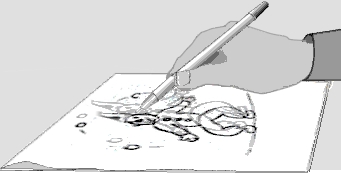 |
Draw or trace the next drawing on the next blank page on top of the drawing you just did. Work from the bottom page of the pad toward the top page. It is very helpful if the pad paper is thin enough to see through slightly. Then you can see the previous drawing. If not, you can flip the upper page every so often to compare the drawings.
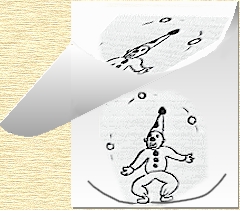
You can always color the drawings when you are finished. When the finished drawings are flipped, the image seems to move, because each drawing advances the motion slightly from page to page. How much movement you draw from page to page comes best by practice.
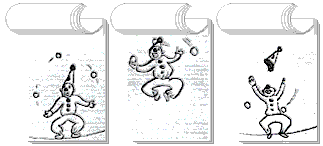
Hint: Faster motion needs less drawings. Slower motion needs more drawings.
|
<== This moving drawing was photographed from the actual flip book.
Web Page contents ©1999 R. Truscio (All rights reserved)
